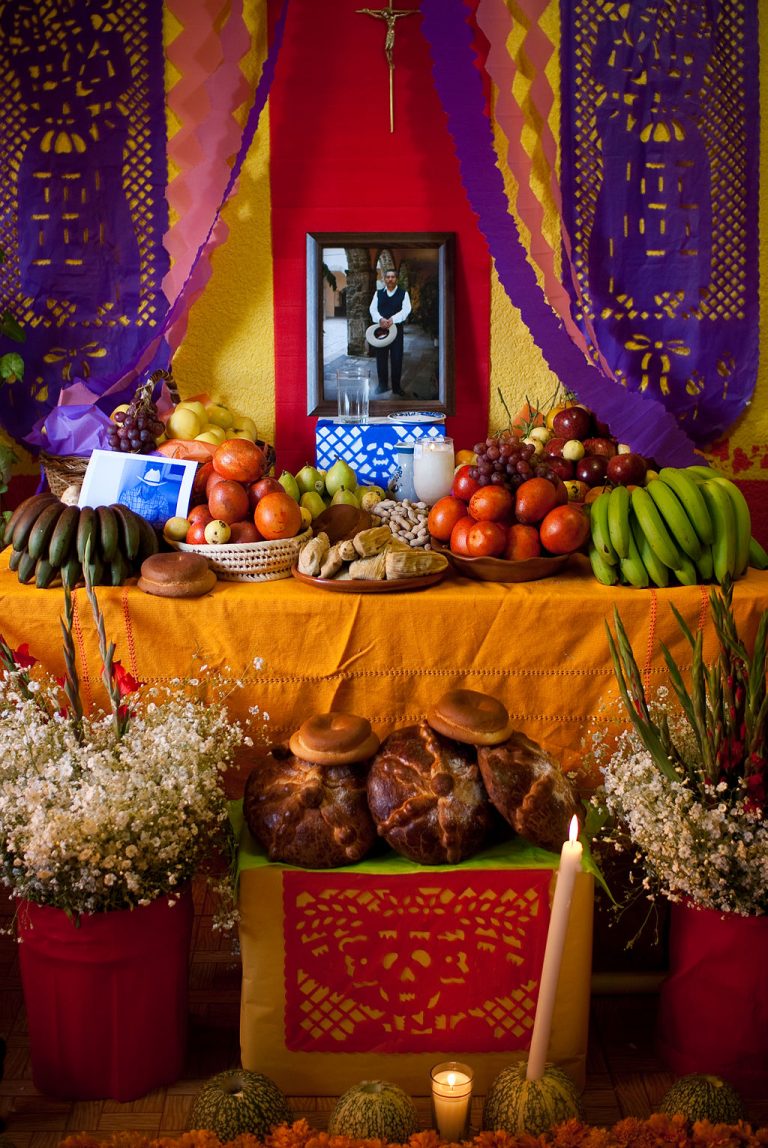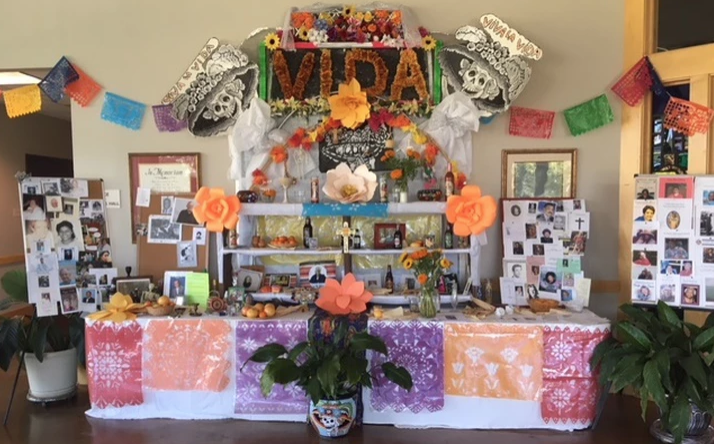
Toys and candies are left for the angelitos, and on Nov. We invite all members of the community to add photographs, handwritten messages, or small offerings of food, flowers (real or paper), or. Our community altar is available for anyone, for free. Salt and water are also essential they are set to quench the thirst of the souls, tired from their long trip. The altar needs to have lots of food, bottles of soda, hot cocoa and water for the weary spirits. Join History Colorado in celebrating Da de los Muertos and honoring our friends, family, and loved ones who have passed. In our case, the most important thing is that the children get involved in the tradition and have the opportunity to talk with them about our family who has died already and they did not have the chance to meet. A day’s activities normally include going to the cemetery where loved ones are laid to rest and paying tribute to them with elaborate altars. The original altars have 7 levels for which you would need a firm base of wooden drawers on each level. The light of the candles also called ceras -waxes- symbolize Jesus Christ Reborn and faith.įlowers, specially Cempasuchitl, adorn the ofrenda. Every year on November 2nd Mexico celebrates Dia de Los Muertos or Day of the Dead a holiday that is one of the ultimate representations of our culture. Their light is thought to guide them on their way back. Generally, on the top level, the images of Saints and the Crucifix are set.įor each deceased relative, a candle is set. Da De Los Muertos is one of the most important traditions celebrated throughout. Several levels can be set on the ofrendas. Pan de Muerto (the bread of the dead) and sugar skulls 5. Toys and salt figurines, particularly for the children 4. Candles and lights, which represent guides to help souls escape from purgatory 3. Public schools at all levels build altars with ofrendas, usually omitting the. Then the papel picado, cut tissue paper, is set over the cloth. Typically, a seven-step altar includes the following levels, from top to bottom: 1. The Day of the Dead (Spanish: Da de los Muertos, also known as All Souls. The ofrenda is set on a table, covered with a fine tablecloth, preferably white. We must remember they are going to have very important “visitors”. Day of the Dead (Día de los Muertos) is a Mexican celebration when families gather to honor the memory of deceased loved ones on November 1 and 2.

Before setting an altar, they thoroughly clean their house. O frendas are set up to remember and honor the memory of their ancestors.

The vast majority of Mexicans are Christian Catholics, so they only worship God. Some people mistakenly think that Mexicans that set up ofrendas for their defunct relatives are actually worshiping them. They are also called altares or altars, but they are not for worship. It represents the levels that the soul must go through in order to reach. The word ofrenda means offering in Spanish. The most traditional of these Day of the Dead traditions is the seven-level altar. The celebration is not solely focused on the dead, as it’s also common to give gifts and candy to family and friends.ĭifficult words: altar (a raised plattform where sacrifices or offerings are made to a god, ancestor, and so on), pass away (an euphemism or a gentler expression for to die), mourn (to feel or express deep sadness because of someone’s death).Ofrendas are an essential part of the Day of the Dead celebrations. However, it has much less serious feelings than the Catholic celebrations, as people portray it as a joyful celebration rather than for mourning.

Held on November 2, Dia de los Muertos combines Catholic and native practices, and Catholic communities celebrate it around the world. Some families enjoy keeping the tradition alive, they continue using the items, they keep memories alive, and in this way it keeps the dead people alive, too. Mexicans leave food and drinks for their departed loved ones, and many people believe that the dead return to visit them once a year. They decorate an altar with photos and items used by family who passed away. Mexicans prepare altars ahead of the Dia de los Muertos, a Mexican tradition that honors the dead. Día de los Muertos (Day of the Dead) is Nov.


 0 kommentar(er)
0 kommentar(er)
